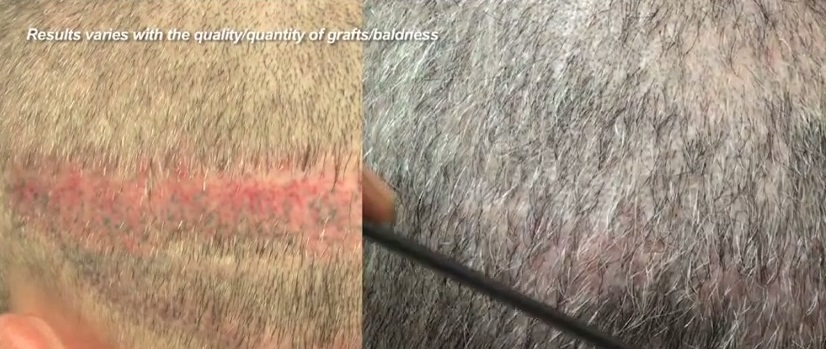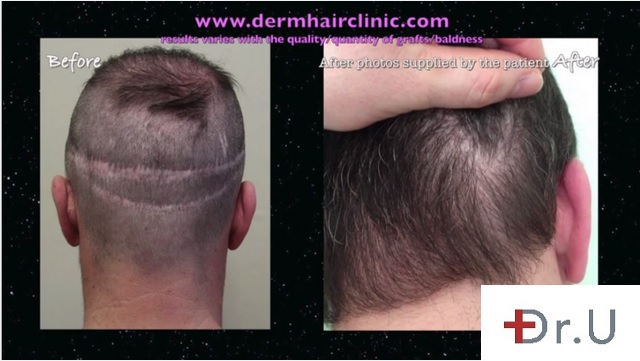While it is possible for you to experience some growth after 8 months, the bulk of the growth should have manifested by the 8 th month. Reasons for poor growth could range from poor surgical technique to a cause for your hair loss that was not addressed in the first place. Female hair loss can often be a result of other diseased conditions or states which if treated properly may alleviate the hair loss or even reverse it. A hair specialist (preferably a dermatologist) should be seen for a good history taking and examination as well as a comprehensive blood test or even a biopsy to rule out any of several causes of hair loss in women which includes for example: Thyroid diseases, Iron deficiency, polycyclic ovaries and other androgenic states, etc. If these conditions are causing the hair loss and are not addressed properly, a hair transplant procedure would likely fail. I would advise you revisit the surgeon that performed your transplantation 8 months ago to discuss these points and if necessary visit a dermatologist to do a complete work up before contemplating further surgery. Remember you have a finite donor supply and doing another wasteful surgery would not help your donor pool.
What are the options for improving the appearance of a strip surgery scar?
It is good to start off knowing that a strip scar once created cannot be made to disappear. The best solution is to avoid it all together.
The following approaches are all available options and they all have pros and cons:
1. Revision. If the scalp is lax enough and for scars wider than 1cm in the average, this is an option to consider. The scar is excised and closed again. Measures to take in improving the odds of a better scar includes the following
i. Adopting a trichophytic closure technique if possible
ii. Avoid revising a scar that is closer to the nape than the nuchal crest
iii. Avoid scalp stretching positions and actions for a prolonged period of time after surgery
iv. Adopting better closure techniques. Double layer closure is preferable
The pros include the possibility of retrieving some grafts for transplantation in the process. The cons include the higher likelihood of stretch back which may even be worse than the original scar. Damage to neighboring follicles in the process of scar excision. A more involved recovery period.
2. Grafting the scar with hair follicles. I have found beard hair to be especially well suited for this purpose as shown in the following examples of my previous patients:
Bad Hair Transplant Scars Repair and Severe Baldness Restoration by UGraft & BHT
Hair Transplant Strip Surgery Scar Repair Using UGraft -BHT
The pros include less danger of scar getting worse (no chance of stretch back), and it is perhaps the only option in cases of low scalp laxity. Cons: poor growth in scar. In this case repeat procedures may be called for.
3. Tattooing. This is done by a clinical tattooist and should be done conservatively in gradations. The tattoos should be made to appear like dark dots instead of a solid block. This methods is best used in conjunction with scar grafting (#2 above) as was done in this patient of mine to very effective ends: Hair Transplant Strip Surgery Scar Repair Using UGraft-BHT
It is also worth considering in scars that are very thin but whitish.
4. Steroid Injections: this is recommended in hypertrophic or keloidal scars, were repeated injections of triamcenolone is used to flatten the scar to the level of the remaining scalp. It can be done after scar revision, or if grafting of the scar is preferred, it should be done before the grafting is done.
“The information on this site is solely for purposes of general patient education, and may not be relied upon as a substitute for professional medical care. Consult your own physician for evaluation and treatment of your specific condition.”

Further Reading
About UGraft hair transplant repair
http://www.jprasurg.com/article/S1748-6815%2812%2900230-6/abstract

